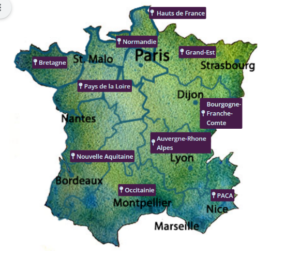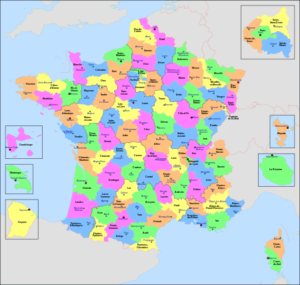Town: Bagnoles-de-l’Orne
Town: Bagnoles-de-l’Orne
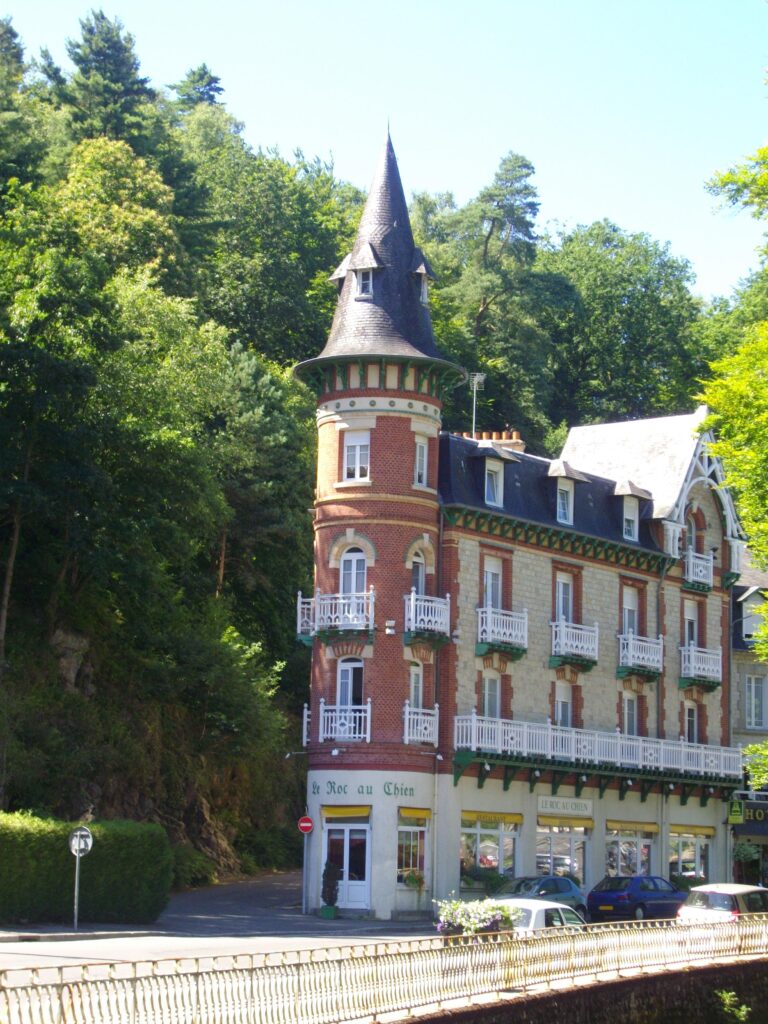

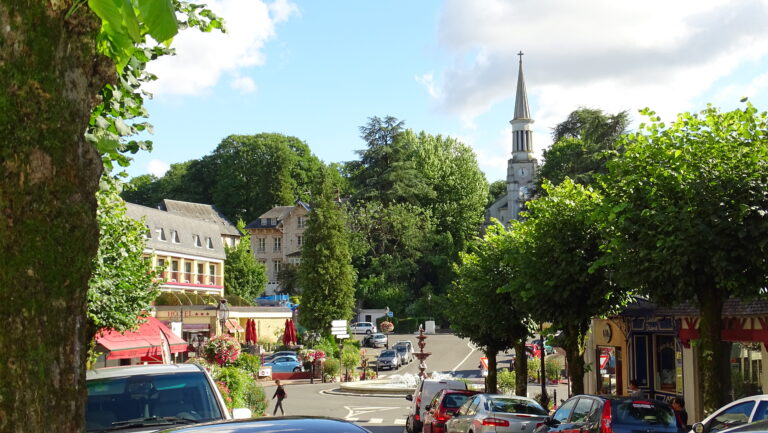
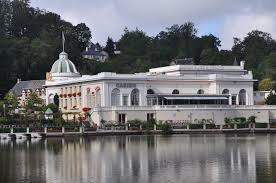


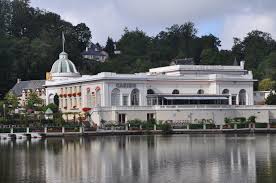
Looking at the climate of France as a whole, in order to give you a general notion of this town’s climate factors (sun,rain,heat, cold,wind, snow) we use three categories (most, mid, least) . So, the label above is telling you what this factor is (most, mid-range, least) considering the whole of France. For a much more in-depth understanding of the weather, go to the site weatherspark.com. Be sure to use the feature they offer to compare towns.
Looking at the climate of France as a whole, in order to give you a general notion of this town’s climate factors (sun,rain,heat, cold,wind, snow) we use three categories (most, mid, least) . So, the label above is telling you what this factor is (most, mid-range, least) considering the whole of France. For a much more in-depth understanding of the weather, go to the site weatherspark.com. Be sure to use the feature they offer to compare towns.
Looking at the climate of France as a whole, in order to give you a general notion of this town’s climate factors (sun,rain,heat, cold,wind, snow) we use three categories (most, mid, least) . So, the label above is telling you what this factor is (most, mid-range, least) considering the whole of France. For a much more in-depth understanding of the weather, go to the site weatherspark.com. Be sure to use the feature they offer to compare towns.
Looking at the climate of France as a whole, in order to give you a general notion of this town’s climate factors (sun,rain,heat, cold,wind, snow) we use three categories (most, mid, least) . So, the label above is telling you what this factor is (most, mid-range, least) considering the whole of France. For a much more in-depth understanding of the weather, go to the site weatherspark.com. Be sure to use the feature they offer to compare towns.
Looking at the climate of France as a whole, in order to give you a general notion of this town’s climate factors (sun,rain,heat, cold,wind, snow) we use three categories (most, mid, least) . So, the label above is telling you what this factor is, considering the whole of France. For a much more in-depth understanding of the weather, go to the site weatherspark.com. Be sure to use the feature they offer to compare towns.
Looking at the climate of France as a whole, in order to give you a general notion of this town’s climate factors (sun,rain,heat, cold,wind, snow) we use three categories (most, mid, least) . So, the label above is telling you what this factor is (most, mid-range, least) considering the whole of France. For a much more in-depth understanding of the weather, go to the site weatherspark.com. Be sure to use the feature they offer to compare towns.
Looking at the climate of France as a whole, in order to give you a general notion of this town’s climate factors (sun,rain,heat, cold,wind, snow) we use three categories (most, mid, least) . So, the label above is telling you what this factor is (most, mid-range, least) considering the whole of France. For a much more in-depth understanding of the weather, go to the site weatherspark.com. Be sure to use the feature they offer to compare towns.
Rating is 1 – 4 (1 being most friendly)
- Known to be a favorite for internationals and/or Anglophones; English heard frequently
- Substantial international community; hearing English is not unusual
- Some expats, or other international populations, occasionally you might hear English spoken
- Not especially international; English rarely heard spoken”
AVF stands for Accueils des Villes Françaises (roughly translated ‘Home of French Cities’ From their website: The national network of Accueils des Villes Françaises “offers new residents and anyone looking for social connections friendly activities that allow them to discover their new environment and make new friends.”
They are particularly helpful as you meet newcomers, both French and English-speaking. Most branches provide a robust range of classes (including French) and activities, for an incredibly small annual membership fee (35 Euro?) Here’s their national website, which will connect you to the branch in the town you are looking at https://avf.asso.fr/
This category differs with each town. One town might have a large international industry (Bordeaux: aerospace) or govermental HQ (Strasbourg: EU) while others are simply perennial favorites for internationals (like Nice, or any nice spa town, like Jonzac or Bagnoles-de-l’Orne)
We feel that a large university is a marker of a town used to newcomers and at home with a range of cultures and ideas.
A town that attracts retirees is more likely to be safe, affordable,temperate in climate, offer good health care options and be welcoming
We use three categories: least, mid, or most expensive. For wonderful details and ability to compare costs of different French towns, see villedereve.fr
Data from the site villedureve.fr. Range from 0 to 100 with 100 the best
*More than 30 days, less than 90. Off-peak season, prices & features vetted for this kind of stay.
Small towns population: 15,00 – 7,500 Big towns population: 7,500 – 50,000 City: 50,000 – 250,000 Big City: 250,000 +
Small towns population: 15,00 – 7,500 Big towns population: 7,500 – 50,000 City: 50,000 – 250,000 Big City: 250,000 +
(On a scale of 1 – 5, 1 easiest)
(On a scale of 1 – 5, 1 easiest)
A robust train station is in or nearby this town
The town developed and prospered as a health resort around its thermal spa waters and grand buildings such as the ‘Grand Hotel’ as well as the picturesque lake, gardens, riverside walks, cascades, and forest as well as many other attractions including good sports facilities. It is perhaps the fine examples of the “belle-epoque” (approx. 1884-1914) architecture that Bagnoles de l’Orne is best known for.
Some reports characterize Bagnole as “lacking in activity” in the winter months
Who recommends it?
Cle France: "The town has a number of good restaurants and plenty of useful shops and other facilities. Leisure pursuits in Bagnoles include tennis and golf, and of course, thermal baths and treatments. The town developed and prospered as a health resort around its thermal spa waters and grand buildings such as the 'Grand Hotel' as well as the picturesque lake, gardens, riverside walks, cascades, and forest as well as many other attractions including good sports facilities...Apart from the spa waters, it is perhaps the fine examples of the "belle-epoque" (approx 1884-1914) architecture that Bagnoles-de-l'Orne is best known for. Particularly fine examples can be found in the "quartier belle-epoque" towards the south of the town. The "belle-epoque" style came to an abrupt end with the First World War, to be replaced when the war ended by the new "art-deco" style, also very well represented in Bagnoles."
The Times: "... Normandy’s only spa resort, Bagnoles-de-l'Orne, where you come for the cure, but stay for the social, cultural and natural delights. In the spa’s heyday, pre-First World War and through the Années Folles (“Crazy Years”, or Roaring Twenties), these attractions — together with Christophle’s marketing acumen — lured the great and not-always-good from across Europe, including royals from Britain, Belgium, Italy, Spain, Romania and Greece. In the postwar years, though, those affluent aristos and the bourgeoisie decamped to more exotic climes, replaced by elderly, state-supported patients ambling the town’s thoroughfares and lakeside promenades between treatments. Today, Bagnoles’ attractions — particularly its gastronomic offerings — are once again wooing the in-the-know French. But it’s health tourism that’s at the forefront."
Normandy Then and Now: "I am delighted to find myself in this quiet little Norman bathing-place, just getting known to the French and foreign public. It is hardly a village; the collection of villas, small houses, shops, and two enormous hotels surrounding the establishment seems to have sprung up quite suddenly and casually in the midst of the green fields and woods, shut in on all sides almost by the Forest of Ardennes, which makes a beautiful curtain of verdure.
There are villas dotted about everywhere, of every possible style; Norman chalets, white and grey, with the black crossbeams that one is so familiar with all over this part of the country; English cottages with verandas and bow-windows..."
Jasper L Orne chose Bagnole after three other towns: "Had the same question 10 years ago after vacationing in many places in France. We moved to the Aix-en-Provence area for work, and it was gorgeous but it was a 3 season kind of place. Then retired in Brittany close to the coast, which was more affordable, less people, quite windy, no snow unless you‘re an hour away from the coast. It like the Outer Banks for the French, many vacation homes and restaurants that are busy in summer, and closed in winter. We are currently in a spa town in Normandie, and for us we think we’ve cracked the code. The 4 seasons are here, just not too much of any one of them. Cafes, restaurants, cinema, and a casino open year round with a population of 3500. Access by bus/train to Paris in 2 hours, and an hour south of Caen. No mountains to speak of in any of these places, just rolling hills and peaceful uncluttered landscape."
